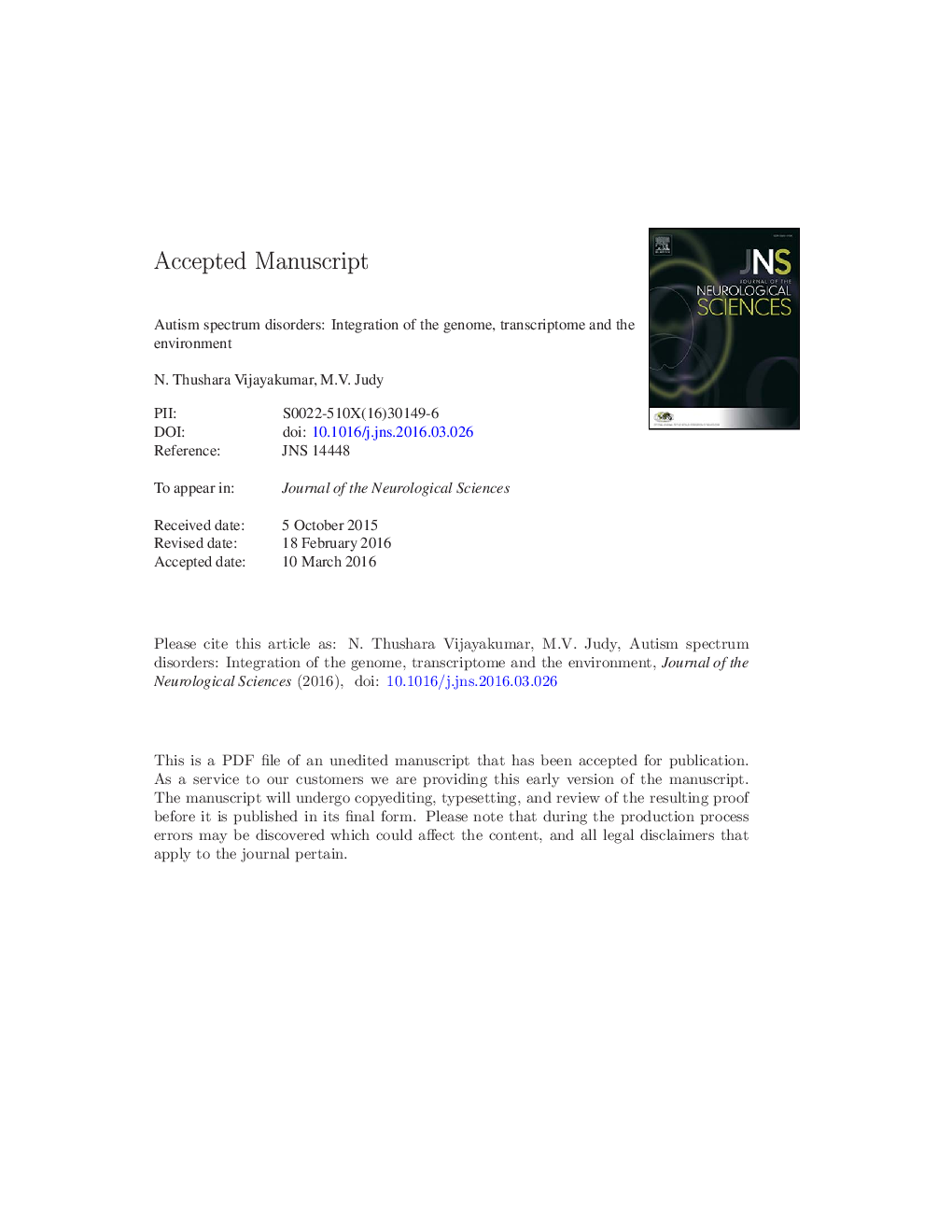| Article ID | Journal | Published Year | Pages | File Type |
|---|---|---|---|---|
| 8274326 | Journal of the Neurological Sciences | 2016 | 33 Pages |
Abstract
Autism spectrum disorders denote a series of lifelong neurodevelopmental conditions characterized by an impaired social communication profile and often repetitive, stereotyped behavior. Recent years have seen the complex genetic architecture of the disease being progressively unraveled with advancements in gene finding technology and next generation sequencing methods. However, a complete elucidation of the molecular mechanisms behind autism is necessary for potential diagnostic and therapeutic applications. A multidisciplinary approach should be adopted where the focus is not only on the 'genetics' of autism but also on the combinational roles of epigenetics, transcriptomics, immune system disruption and environmental factors that could all influence the etiopathogenesis of the disease. ASD is a clinically heterogeneous disorder with great genetic complexity; only through an integrated multidimensional effort can modern autism research progress further.
Keywords
IPSCsBranched-chain α-ketoacid dehydrogenase complexLCLSCNVsBCKDDNAmPTBaCGHWESToMDMRWGSACCCMABCRbranched-chain amino acidsHuman leukocyte antigenHLAAgenesis of the corpus callosumattention deficit hyperactivity disorderautism spectrum disordersNeurodevelopmental disordersArray comparative genomic hybridizationAutismEpigeneticsBCAAADHDChromosomal microarray analysisWhole exome sequencingWhole genome sequencingGastrointestinalPreterm birthInduced pluripotent stem cellsDNA methylationEnvironmentdifferentially methylated regionsintellectual disabilityTheory of mindASDSingle nucleotide polymorphismSNPCopy number variations
Related Topics
Life Sciences
Biochemistry, Genetics and Molecular Biology
Ageing
Authors
N. Thushara Vijayakumar, M.V. Judy,
